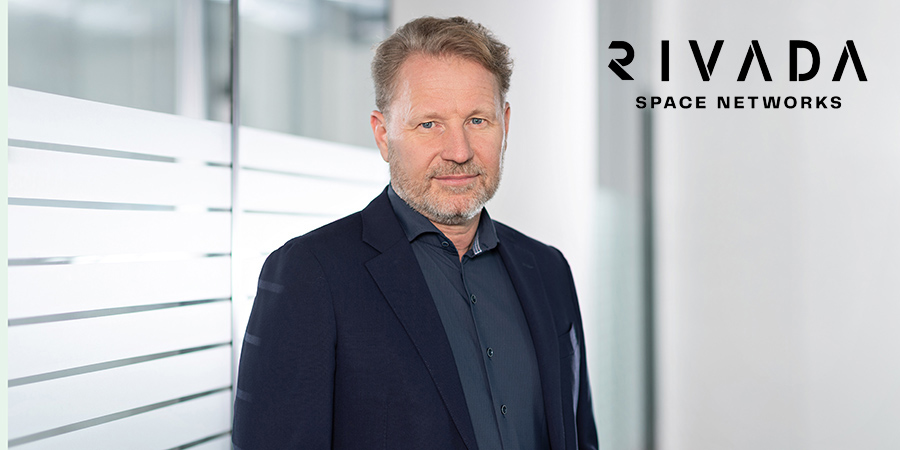As data sovereignty, infrastructure resilience and trusted communications become increasingly more important in the Middle East, Rivada Space Networks is offering a bold proposition: a space-based networking mesh designed to keep critical traffic sovereign and secure. Chief Commercial Officer Ronald van der Breggen outlines how the company's Outernet architecture fits into the regional landscape, where it differs from consumer LEO constellations, and why it sees itself not as a competitor to terrestrial telcos, but their most resilient ally.
How would you summarise what Rivada Space Networks is doing that’s new?
The most important thing we’re doing is providing governments and enterprises with a truly sovereign alternative to legacy infrastructure — not just more encryption, but a physical network they can control. What we call the Outernet is a mesh of satellites with inter-satellite links and ground stations that gives entities complete command over how and where their data travels. That’s become massively important — especially in the Middle East.
Rivada’s Outernet is more than standard LEO broadband. What do you mean by “sovereign”?
Today, moving data from point A to B depends on fibre routes, submarine cables and leased capacity — most of which goes through jurisdictions you may not even be aware of. Even with encryption, your data is stored and could be decrypted later. With the Outernet, you’re physically routing your traffic through infrastructure nobody else can touch. It’s encrypted, of course, but it’s also very private at the lowest OSI layer — the physical transport. That’s a game-changer.
How do telcos view your architecture?
Telcos aren’t our competitors — they’re our distribution partners. We see ourselves as complementary. Fibre still carries vastly more capacity than any satellite, and we’re not trying to compete with that. But what we offer is survivability. If you route even 1% of your most critical traffic over a parallel network, one with a tiny attack surface and high reliability, that changes everything.
So telcos can continue to design their network for massive data and applications, but there’s always a critical portion that must stay up. If 1% of the traffic rides on a superior infrastructure, which per megabit is more expensive, but it’s just 1 or 2%, even if it’s 100 times more expensive, your bill goes from $90 to $92 or $95 at the most. At least you’re sure to always have that critical connectivity.
What has been the response so far in the Middle East?
Without naming names, we’reseeing major regional operators focusing around this issue — data sovereignty, resilience and regional control. The interest has been huge. Everyone’s asking: how can we protect our own data in a world, where surveillance and disruption are becoming normalised?
As a result, Rivada Space Networks has also expanded its EMEA Team with the appointment of Mustafa Afifi as Sales Director for the region. Afifi will focus on sectors including telcos, regional satellite operators and satellite resellers/integrators, providing the most demanding enterprise and government customers with our highly secure, high-bandwidth, global connectivity network.
What is the network performance?
We can offer 20Gbps per satellite of committed information rate with latency and SLA characteristics similar to terrestrial fibre. That’s fundamentally different from consumer-grade satellite internet. For governments, financial institutions, energy companies, or media operators, this is not just a backup — it’s infrastructure they can rely on.
How does the Outernet architecture work?
Think of our satellites as routers in space. Data goes up, travels laterally through the satellite mesh, and comes back down where you need it — without transiting across risky jurisdictions. You can land traffic inside a country, comply with regulations, even put in a red-button fail-safe. And because we’re modular, the same setup works across 30+ countries where we’ve already secured market access.
How does your model differ from something like Starlink?
Honestly, one of our biggest challenges is that people immediately think “Starlink” when we say LEO satellite. Starlink is consumer broadband. It’s best-effort, last-mile internet. We’re not that. We’re a premium, committed-rate service for enterprise and government. Starlink’s per-satellite capacity is around 13 Mbps up/down. Ours is 20 Gbps. Different market, different use case.
Is this commercially viable?
Absolutely. We’re structured as a wholesaler. We don’t do field service or installations — that’s the role of our resellers, like Wiseband in the region. We currently have over USD 16bn in MOUs from validated reseller contracts — line-itemed by sector, geography and price point. That’s a huge vote of confidence.
As a premium service, are you in the same pricing war as others in the satellite space?
Not at all. We’re not racing to the bottom. Our price-per-megabit is higher, but it’s also a different conversation. If 1% of your traffic rides on our infrastructure and it costs 10x more, your overall bill goes up from $100 to $110 — but you’re always online and always secure. We’re the fallback when everything else fails. You don’t care if there is a small % increase in the overall bill — you need it to work. That leads to very different conversations with customers. It’s a strong value proposition for governments and enterprises who want to be in control of their data in a time when everybody seems to be laying their hands on anything and everything. Our story is resonating very well in that new world.
What do telco’s in the Middle East need to know about Rivada’s Outernet?
The biggest one is thinking we’re just another LEO broadband player. We’re not. This is terrestrial networking in space. We’re here to complement fibre, not replace it. We’re the infrastructure you use when everything else breaks. If you’re a telco, a bank or a government ministry, this is that layer that keeps you running no matter what.
We’re the secure, resilient backbone for critical traffic — a space-based layer that guarantees sovereignty and survivability in an unpredictable world.










